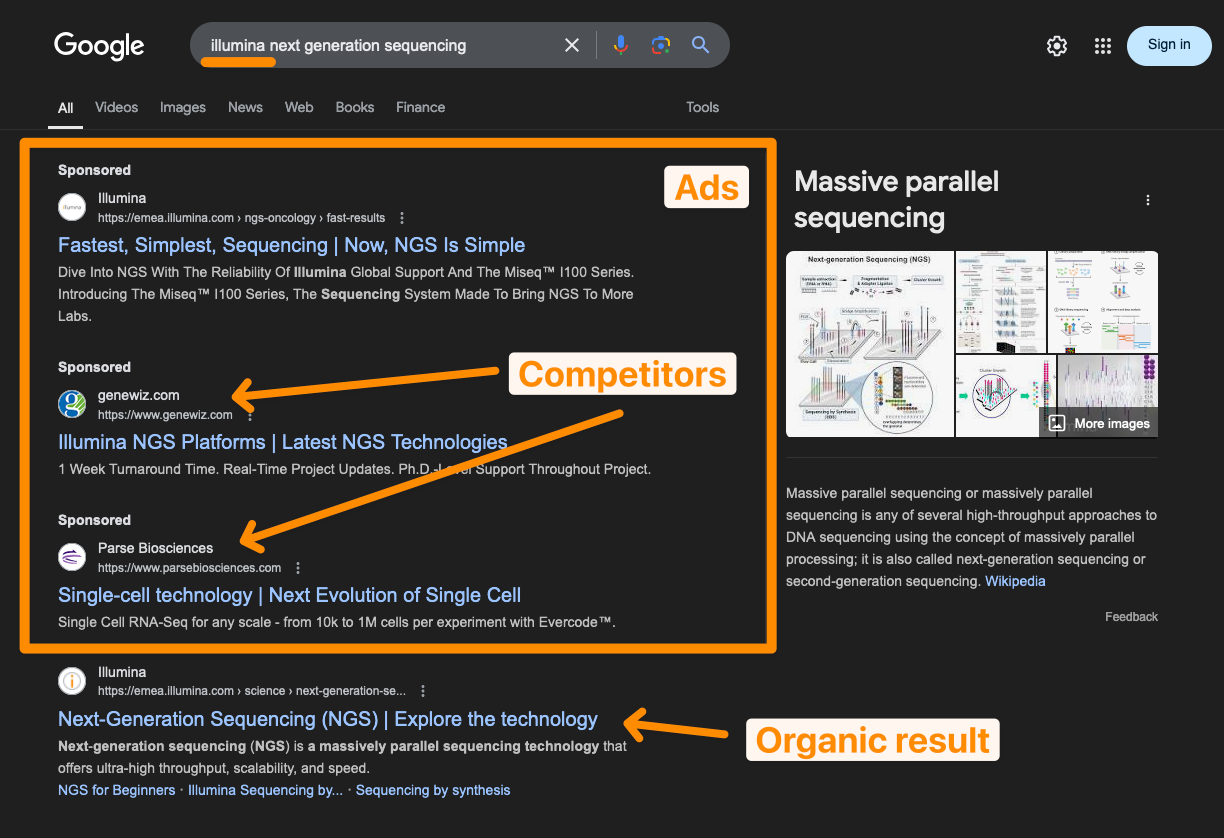Working with a limited marketing budget is the norm for small to mid-sized science organizations. I suspect this stems from the fact that marketing is often seen as a visibility tool rather than a growth tool, but whatever the cause, the reality is that many science marketers often have to be creative to find the resources they need to achieve their goals.
So, to help my fellow science marketers with their day-to-day challenges, I decided to put together a list of what I think are good tips for doing more with less, because let's face it, the marketing budget you've been allocated isn't likely to grow overnight, so your biggest chance is to optimize your second-best resources: your time and focus.
Let’s dive in.
1. Pause and review
When we’re stretched too thin, it’s easy to overlook the importance of stepping back and reflecting. Many science marketers are one-person departments managing everything alone, but that doesn’t mean you should stay in the grind indefinitely without a break.
If you’re feeling the pressure of a limited budget, it may be time to rethink your usual approach. One of the best decisions you can make is to stop doing things just because they've always been done that way. When we start a new job, we often get caught up in existing processes, and if no one stops to question them, they can go on forever just because someone decided one day that it was worth doing.
So clear your schedule for a week and take that time to dig into the history of your marketing efforts. Ask yourself: What’s actually working? What’s wasting time? Where are the low-hanging fruits? Use these insights to reset and focus only on what truly moves the needle.
If possible, you can also bring in a third party to help you with your marketing audit. It's often very insightful to invite an outside eye to review your marketing, as it takes away all the bias of being in the business (this is something I do for my clients, so feel free to contact me if you'd like my help).
2. Set realistic goals
Building on the first tip, here’s another key one: set realistic goals! If you know your budget is limited, don’t try to tackle everything at once—it will only lead to inconsistency and underwhelming results. Marketing success depends more on consistency with a single type of campaign than on running a variety of campaigns.
For example, if you’ve identified webinars as a valuable investment of your time and money, commit to organizing one regularly, maybe monthly or bi-monthly. But remember, taking on this commitment likely means you’ll need to let go of something else on your list.
Remove this other task entirely; otherwise, you risk stretching yourself too thin and falling short on consistency. Marketing in a small company is like building a tower with wooden blocks: the more you stack, the more likely it is to collapse. So manage your expectations carefully and don’t put too much on your plate.
3. Repurpose your content
Here's an odd paradox that I often see with my clients: while there's nothing stopping marketers from repurposing content across formats and channels, many still feel pressured to create something new all the time. Meanwhile, they often have a wealth of old material in their archives, ready to be refreshed and reused.
Did you host a webinar last year? Use the transcript to write a blog post. Struggling with LinkedIn post ideas? Break down your last white paper into bite-sized social media posts.
Often, the solution to content scarcity is to recognize what you already have and strategically reuse it. Don't worry about being repetitive—content marketing is often about presenting the same core ideas in new ways. As long as it adds value to your audience, repetition can be a strength, not a weakness.
4. Put AI to use (with limitations)
I couldn't help but talk about AI in this post, because it's a really good tool to use if your marketing budget is limited.
To be clear, I’m not advocating for fully AI-generated content in your marketing. This approach often leads to poor results and is best avoided. Instead, I recommend using AI to streamline your marketing tasks and enhance what you’re already creating.
For example, if you or your team is writing content for your blog, AI can be a great tool for editing and polishing drafts. Even New York Times journalists use AI for this, so why shouldn’t you?
Another helpful use of AI is in video editing. Many tools now make it easy to break down a long video into bite-sized clips for social media. So, if you’ve hosted a webinar and want to create LinkedIn videos, AI-powered editing tools can save hours of work while delivering fresh content to share.
AI has definitely become a buzzword that many software companies slap onto their brands to sound more innovative. But despite the hype, we’re still seeing a ton of useful tools emerge from this new wave of creativity. Most of these tools are designed to save time, which, at the end of the day, is the real value proposition behind all the AI buzz. So for savvy marketers, making good use of it is a no-brainer.
5. Don't spread yourself too thin on social
Here's a very simple technique to improve your marketing focus: be active on just one social media channel. Ditch the rest. Close that damn Facebook page that's been dormant for five years!
Trying to manage multiple social channels at once is a recipe for spreading yourself too thin and being ineffective on all of them. Building an audience on any social platform takes time, effort and a lot of patience. So if you want to improve your reach on LinkedIn, which should certainly be your platform of choice if you are in the B2B space, focus your attention on that channel and no others.
Even if you're still posting on Twitter/X because "it only takes a few minutes," remember that this will still drain your energy and focus. Instead, spend that time engaging with a few posts on LinkedIn, I can guarantee that the return on your time will be much higher.
6. Build your email list
I can’t stress this enough: email marketing is the most powerful promotional channel in B2B. Period.
According to a 2023 McKinsey study, email marketing is nearly 40 times more effective than social media when it comes to acquiring customers.
So, start building your email list now. If you've been following the previous tips, you'll now have more time and focus to repurpose content, giving you a steady flow of fresh material to share regularly. The next step is to package this content into an engaging newsletter to send on a consistent schedule.
So make it easy to sign up for your newsletter and clearly explain what subscribers will get and when they'll get it. If your sign-up form is visible and easy to find, your list will grow over time. Each piece of content you create and share will reach the right people—potential leads waiting to be nurtured. So stop waiting and start giving this the focus it deserves.
7. Spend on ads, strategically
Online advertising may seem complex, but it’s worth your attention, even with a limited budget. With paid ads, a few thousand dollars can go a long way if you optimize it correctly.
The best way to start with online advertising is through Google Ads (or Bing, which can give surprisingly good results). The first task is to identify the high-intent keywords related to your business.
For instance, if you’re a CRO specializing in gene therapy, a high-intent keyword might be “AAV vector optimization.” Anyone searching for this term is likely a potential client, and by bidding on this keyword, you’ll appear at the top of the search results.
Another reliable strategy is to target your competitors’ brand names. Is it ethical? In an ideal world, probably not. But in the world we live in, everyone does it, and your competitors are likely already targeting your company’s name.

If you dive into online ads, make sure your analytics are properly set up. Don’t just track the traffic your ads bring to your website—go deeper. Identify which leads and new clients are being generated through your ads. If you can attribute revenue directly to a specific ad source, you’ll have a proven formula to scale your business. And with that data, it’ll be hard for your boss to deny a request for a bigger budget.
8. Use word of mouth
20% to 50% of all purchasing decisions are primarily driven by word-of-mouth, yet it remains one of the most undervalued marketing channels.
Encouraging satisfied customers to share their experiences can be a powerful, cost-free tool when you have a limited budget. For example, you can incentivize referrals through discounts, goodies, or rewards for every successful recommendation. You can also use a more indirect way by featuring your clients in case studies, testimonials, or social media shout-outs. This shows them that you care about their business and also creates a strong social proof effect.
Of course, this also means that you should have world-class customer support and a really good product, otherwise you're just spreading the negative aspect of your company. But if your CEO doesn't allocate more marketing budget, it certainly means that the company has managed to survive without it so far, so you must have something of value that can be spread by word of mouth.
9. Learn to say no
By now, you should realize that there’s no magic formula to instantly make your life as a science marketer easier. The key is learning to balance your time, focus, and limited budget to maximize your output. To do this effectively, you need to be willing to say no to initiatives that aren’t worth your time or resources.
For example, is your boss asking you to design a new flyer for an upcoming conference? Then ask yourself if it will truly make a difference or just end up in the trash like the last one.
Constantly questioning your activities is hard at first, but the more you do it, the more natural it becomes.
And don't be afraid to say out loud what no one wants to say. As the marketer, you’re the one in charge of deciding what’s truly worth your attention. Yes, management can offer their input, but you can’t accept every idea that flies around in a meeting, or you’ll end up overwhelmed and burnt out.
The good results and data you provide by being more focused will speak for themselves.





